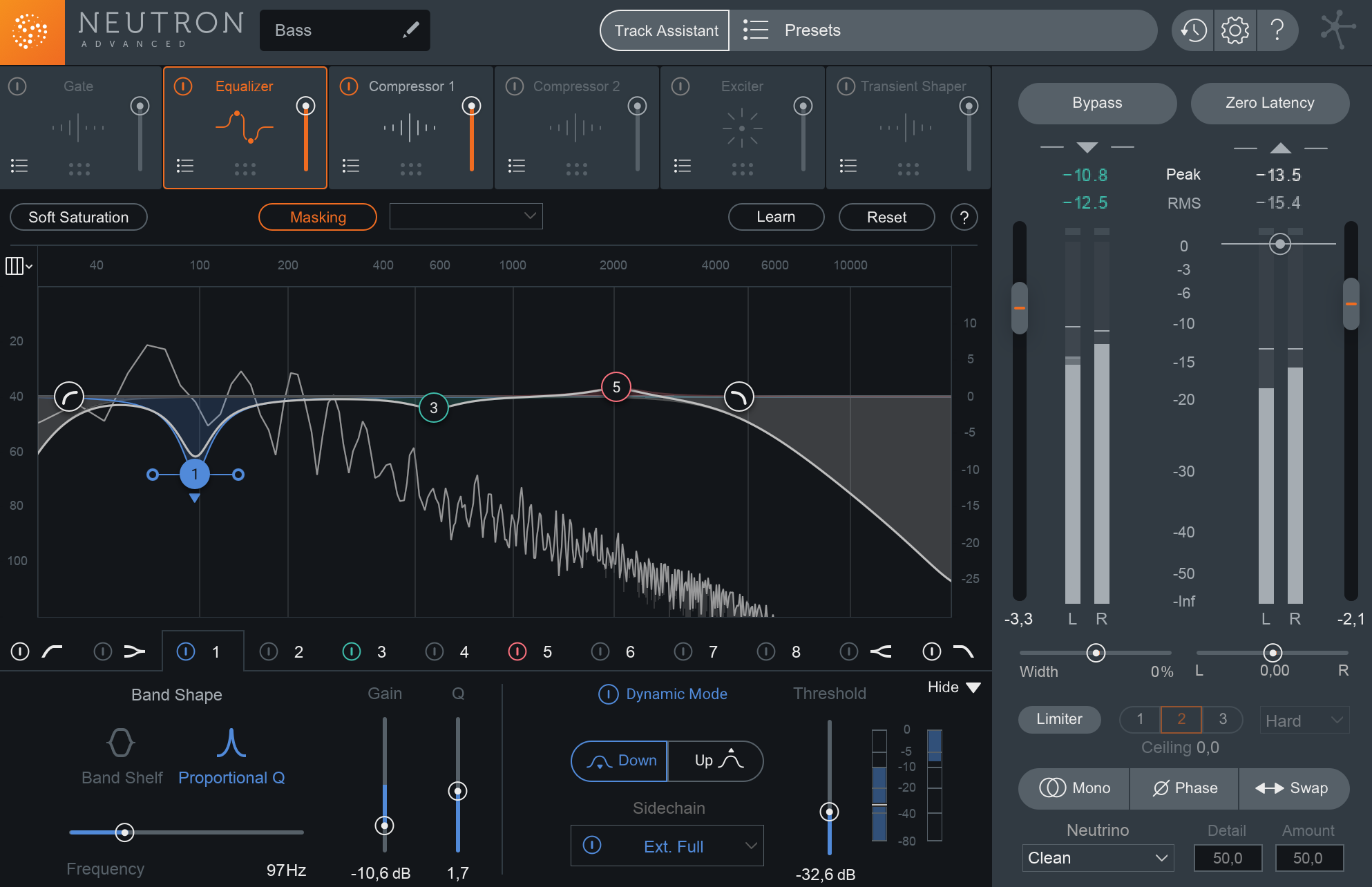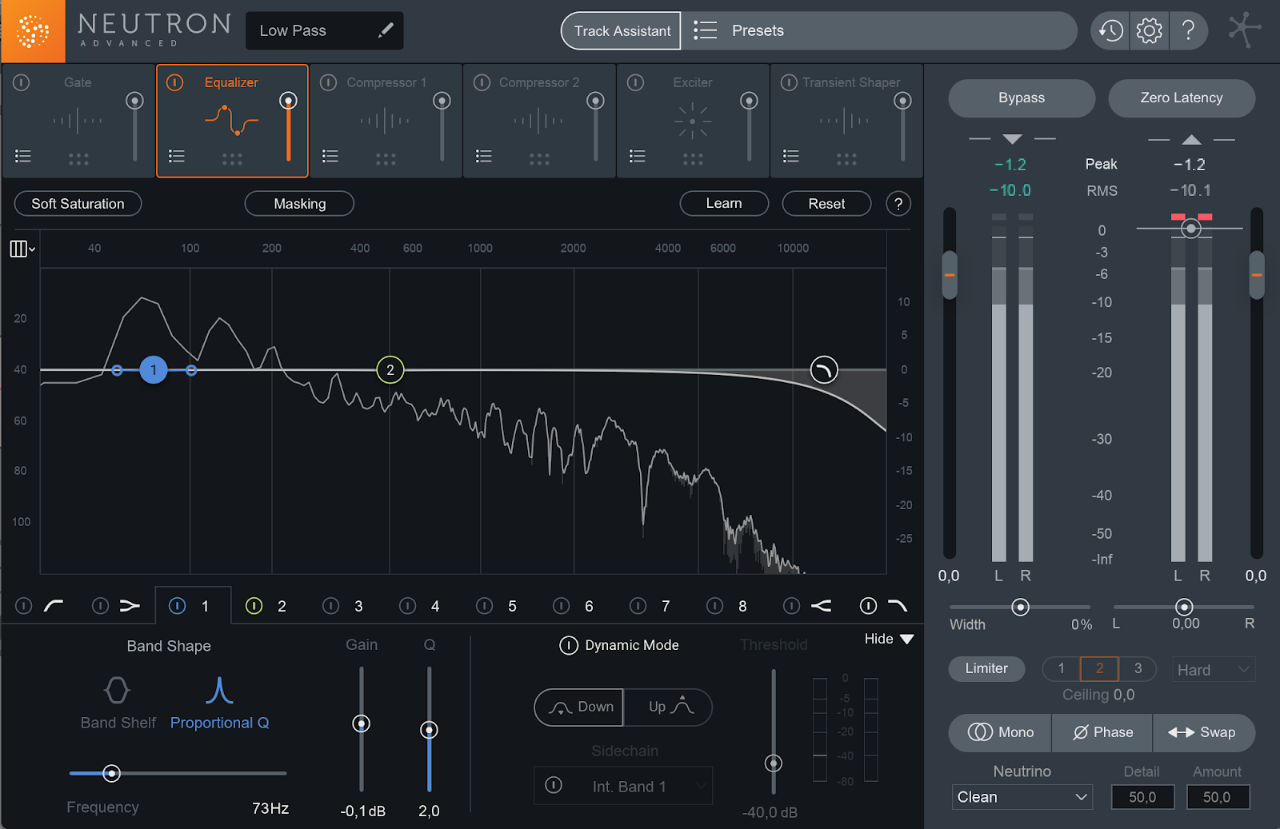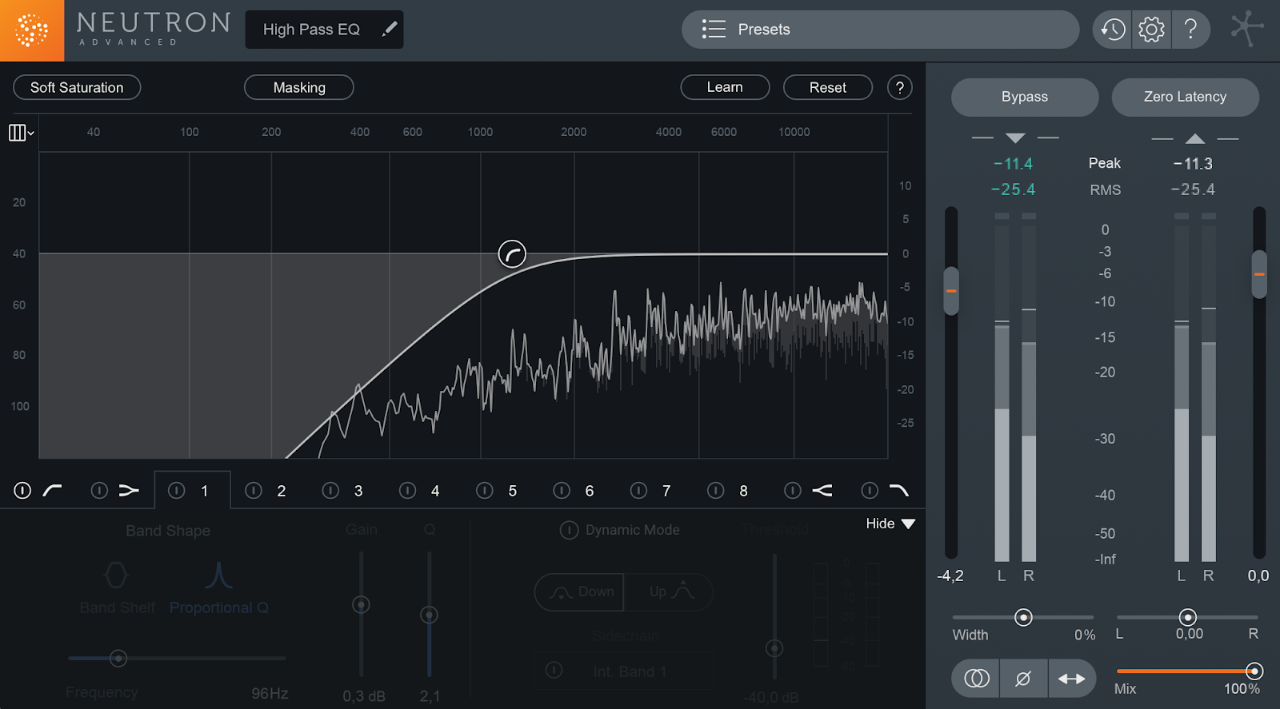5 Ways to Use Dynamic EQ with Sidechain:
Set internal (or external) triggers on drums
Mixing drums is one of the bigger challenges in a song because we expect them to be many things at once: loud, groovy, punchy, cohesive, clear, etc. Compression and transient shaping are a big help here, but dynamic EQ proves useful when carving a unique space for each drum hit. For example:If the overhead mics picked up too much snare bite and this conflicts with the close-miked snare sound, use the main snare to trigger a momentary cut in level in the overheads whenever it’s played.
Is your snare struggling to shine because of masking with the hi-hats? Place one node on the snare harmonics and another on the lower end of the hi-hats, then set the sidechain to duck the hi-hats when the snare is present.
Unpitched percussion with considerable low end can conflict with the lower frequencies of a kick drum. To keep that pulse but prevent sloppy collisions from occurring, get your dynamic EQ sidechain to high-pass the bassy parts of the perc only when the kick comes down.
I need to check to see if each node in the Neutron 2 EQ can have a separate side chain. The side chain choices are internal — all the bands — and external (the one set in Logic as side chain). It looks like I can only side chain one external track.
I can do something like side chain the overheads from Logic and set the nodes in N2 to side chain from the different bands…that will have to do.
Also see “7 Tips for Mixing Drums”


